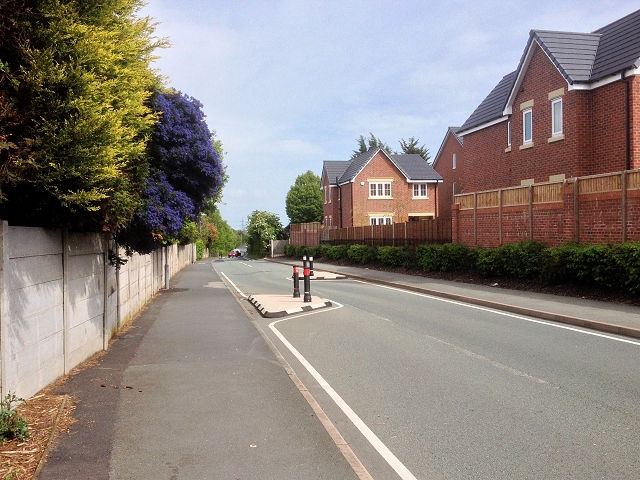Winter is upon us, and with it comes snow in many parts of the country. After a decent snowfall the plows come out, and inadvertently begin to illustrate compelling ideas for both traffic calming and public space. Yes, you read that correctly! As plows clear the streets and ensure automotive traffic can get around safely, they often leave some areas unplowed – areas where cars don’t typically drive. Islands of snow are formed in intersections, dirty snow stacks up around curbs, and triangular patches of white pop up where diagonal streets meet the street grid.
These areas are sometimes referred to as a “sneckdown,” a combination of “snow” and “neckdown.” Advocates for better pedestrian environments often use sneckdown photos to make the case for traffic calming interventions such as curb bumpouts and traffic islands. The untouched snow illustrates that these improvements can be installed without any detriment to drivers, and that a lot of space could potentially be reclaimed by pedestrians. In a few instances, they have even inspired permeant change. A 2011 sneckdown in Philadelphia inspired permanent upgrades to the pedestrian environment at the intersection of Baltimore and 48th Street.
As both medical and traffic experts alike encourage people to walk instead of hopping in a car, urban designs promoting traffic calming are becoming an increasingly important aspect of city planning. One of the most common forms of traffic calming is the curb extension (sometimes called a bulb-out or neckdown).
This intervention extends the sidewalk into the parking lane at key locations, usually an intersection. Curb extensions improve pedestrian safety by increasing visibility of people crossing the street, shortening crossing distances, slowing down turning vehicles, and visually narrowing the roadway for drivers, causing them to drive more slowly. They can also be enlarged to create public spaces or waiting areas for mass transit. What’s more, many types of curb extensions can feature greenspace, which is another opportunity to make our towns and cities more livable.
There are several kinds of curb extensions:
- Gateway: When a curb extension is used at the entrance to a slow speed street. Marking the transition by narrowing the roadway, gateways cue drivers to slow down as the speed limit or housing density changes.
- Pinchpoints/chokers: A curb extension is used in the middle of the block to slow traffic and add public space to the sidewalk area. They also facilitate mid-block crossings in low traffic areas by shortening the crossing distance.
- Chicane: Curb extensions that are offset, creating a “kink” in the road. This slows traffic and also increases public space. The added space created by a chicane can hold bicycle parking, benches, plantings, and other public amenities.
Although curb extensions have many benefits, they may not be appropriate in all circumstances. If a curb extension is on the table, consider the following:
- They may be more expensive to construct than other traffic calming measures
- They can reduce flexibility of the roadway in construction routing
- They can reduce future ability to make changes to the location of bus zones, roadway lane layouts, or crosswalks.
Many cities have found adding more curb extensions to be a good use of resources, and have improved their urban environment by using these simple but effective tools. Austin, Texas has been experimenting with traffic calming. The corner of East 6th and Waller Streets in East Austin is one of the busiest intersections in the city, and the site dozens of crashes in addition to being unfriendly to pedestrians. The city decided to make the intersection a 4-way stop, but that wasn’t all.
We <3 this polka dot intersection in Austin, TX. A quick & affordable retrofit: https://t.co/25wUkSByvt #abbotsFWD pic.twitter.com/B1UgCcwA6i
— Abbotsforward (@Abbotsforward) January 31, 2016
Where pedestrians once lacked even crosswalks, there are now polka dots. Yes – polka dots! Instead of creating a curb extension with concrete, they opted for a low-cost option using what they already had on hand: blue and green paint. The dots clearly define the pedestrian space, and are bright enough to make drivers slow down and look ahead. Poles also separate those on foot from vehicle traffic, adding another layer of safety. The result is an effective method of traffic calming which has enhanced the pedestrian experience and the neighborhood, promoting safe walking with a simple pop of color.
When the snow flies this winter, watch as patterns emerge in the slush and imagine what your local streets could look like if they had a similar intervention. It only takes one person to suggest a new idea or a fresh approach for it to sometimes become a reality. What small changes could improve your neighborhood walking experience? Whether it’s a splash of paint and a few plants, or a more substantial curve in the curb, traffic calming is an important tool in the creation of an improved urban environment.
Sources:
https://www.citylab.com/design/2016/01/polka-dots-help-pedestrian-reclaim-space-in-austin/433749/
https://nacto.org/publication/urban-street-design-guide/street-design-elements/curb-extensions/
https://www.pps.org/reference/livememtraffic/
https://en.wikipedia.org/wiki/Sneckdown








Leave Your Comment